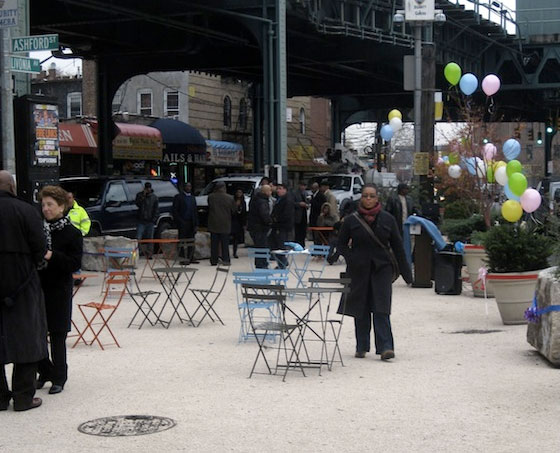Since it launched nearly eight years ago, DOT's public plaza program has relied on a public-private model: The city funds plaza installation and construction, while local partners pick up the tab for maintenance and operations. This works well in some parts of town but is a more difficult proposition in low-income communities. Now, for the first time, the city budget will fund plaza maintenance in neighborhoods that could use additional help.

The de Blasio administration's latest executive budget [PDF] includes $5.6 million over four years for plaza maintenance as part of its OneNYC environmental and equity plan.
"Previously, the plaza program, there'd been no city money put in. We just called on all the community partners to come up with the funding," said Transportation Commissioner Polly Trottenberg. "Some neighborhoods, it's easier to do that than others. It's an equity measure, making sure these kinds of programs can be in every part of the city."
The city funds are intended to supplement, rather than replace, local partners, though exact details of how DOT will distribute the funds have yet to be worked out. "This is money that's supposed to continue to leverage other sources and work with community groups," Trottenberg said. "We just got this money a little while ago, so we're now putting together a plan about what we think makes sense and how we want to spend it."
Plaza advocates welcomed the new funding. "It's so good because the agency and the mayor are acknowledging that plazas are part of their equity agenda," said Laura Hansen, managing director of the Neighborhood Plaza Partnership. NPP, a program of the Horticultural Society of New York, relies on donations to assist the work of plaza partners in low-income areas.
There are currently 49 plazas across the city, with 22 more underway, according to the mayor's budget.





